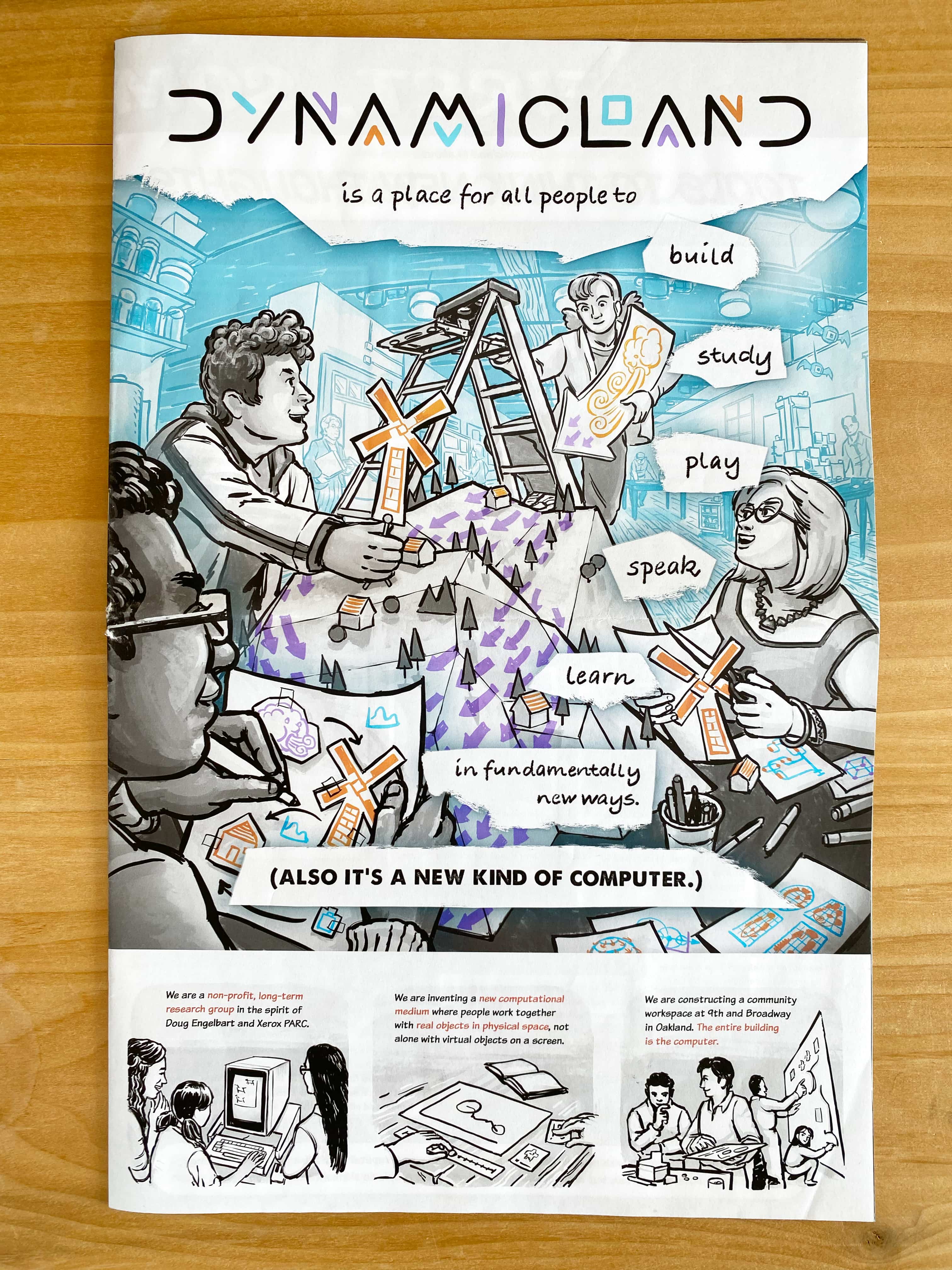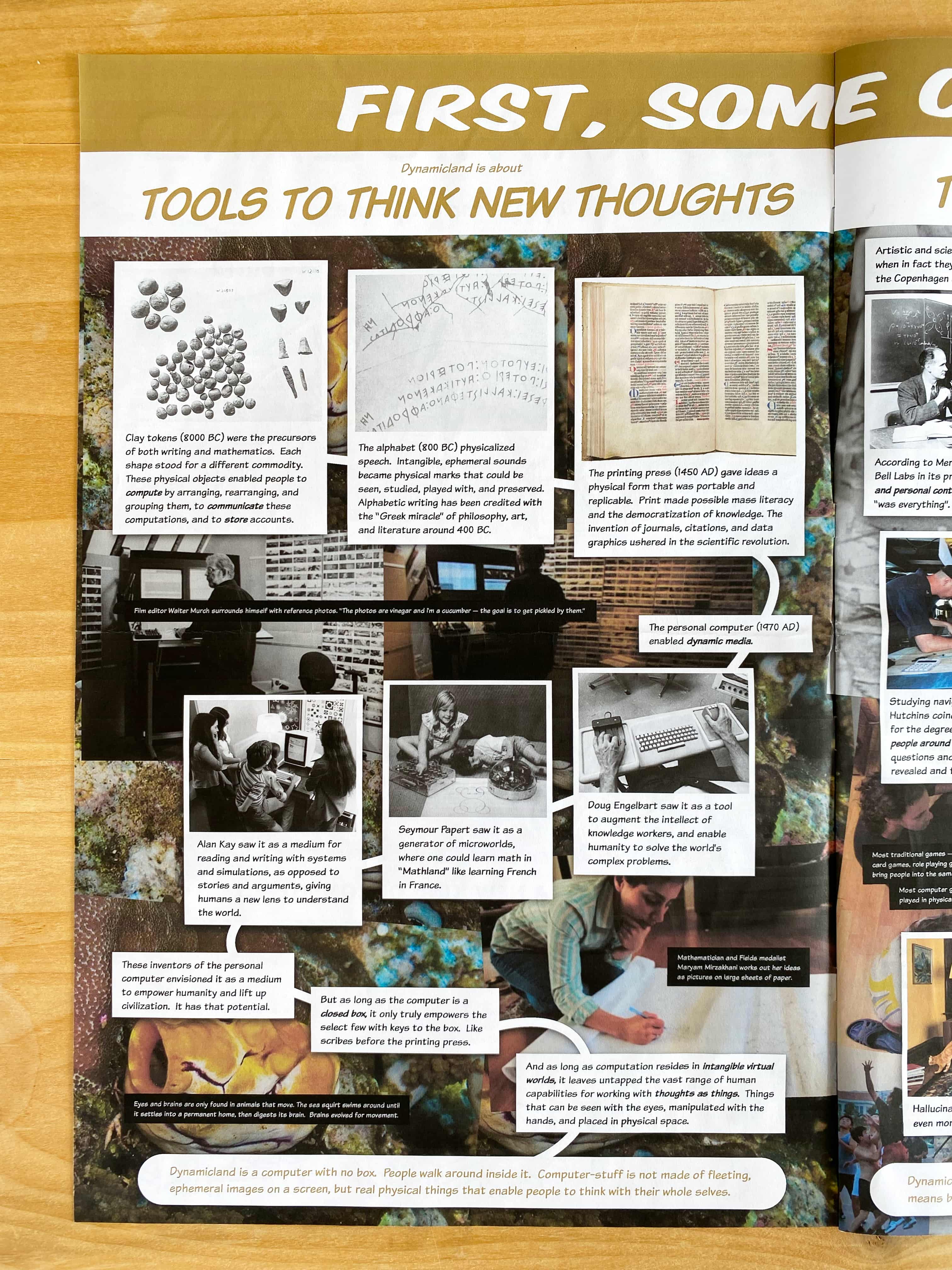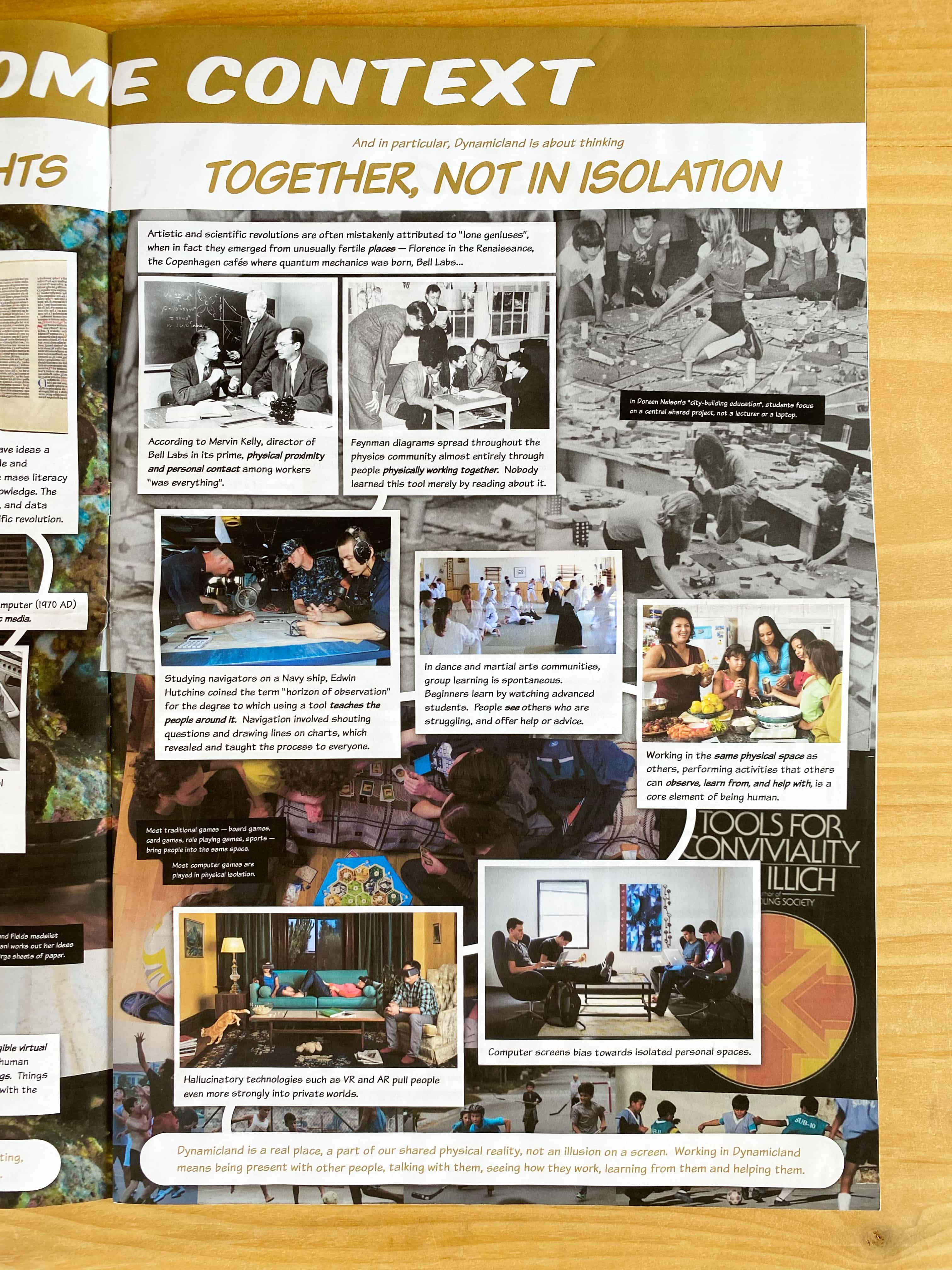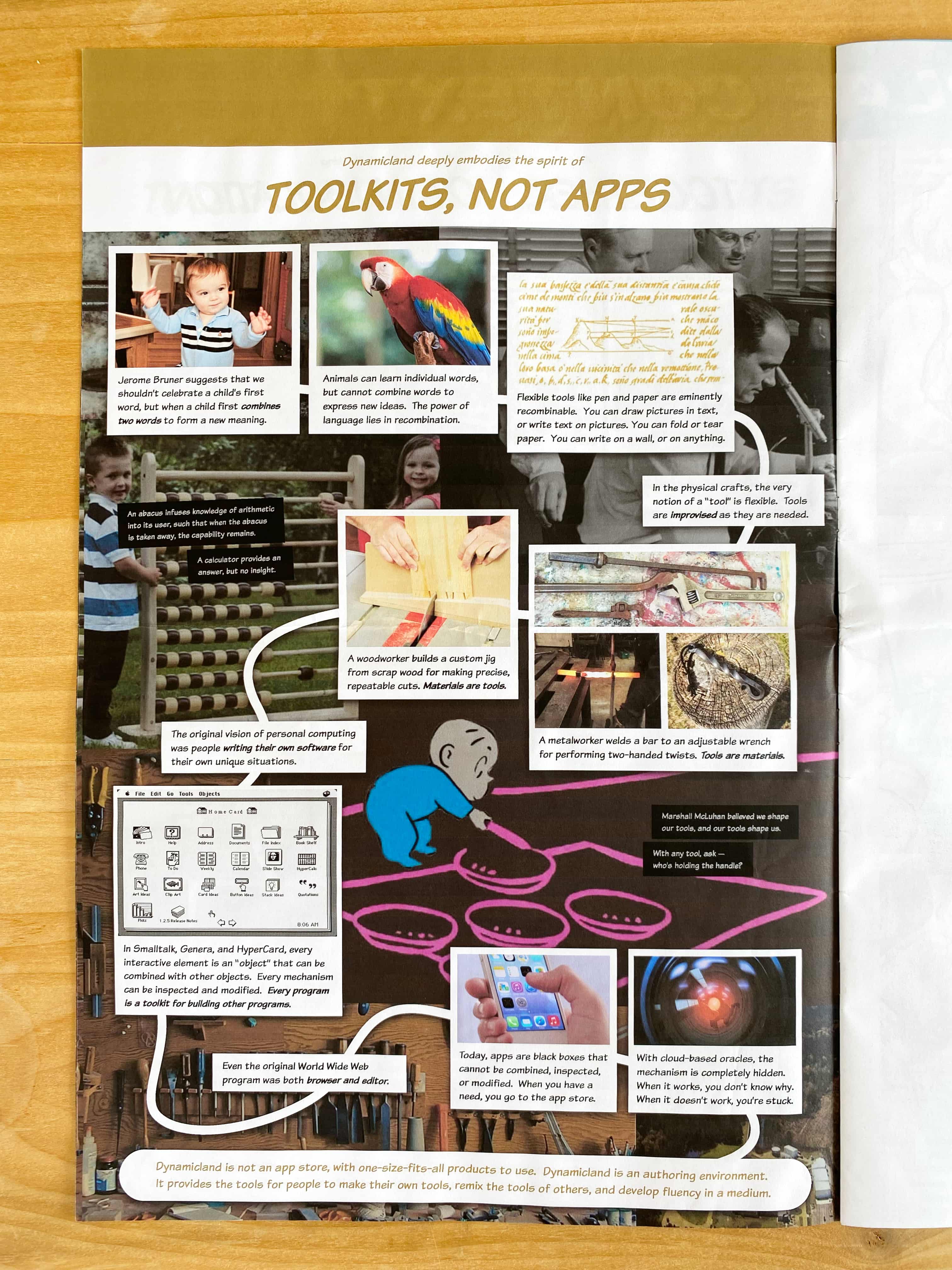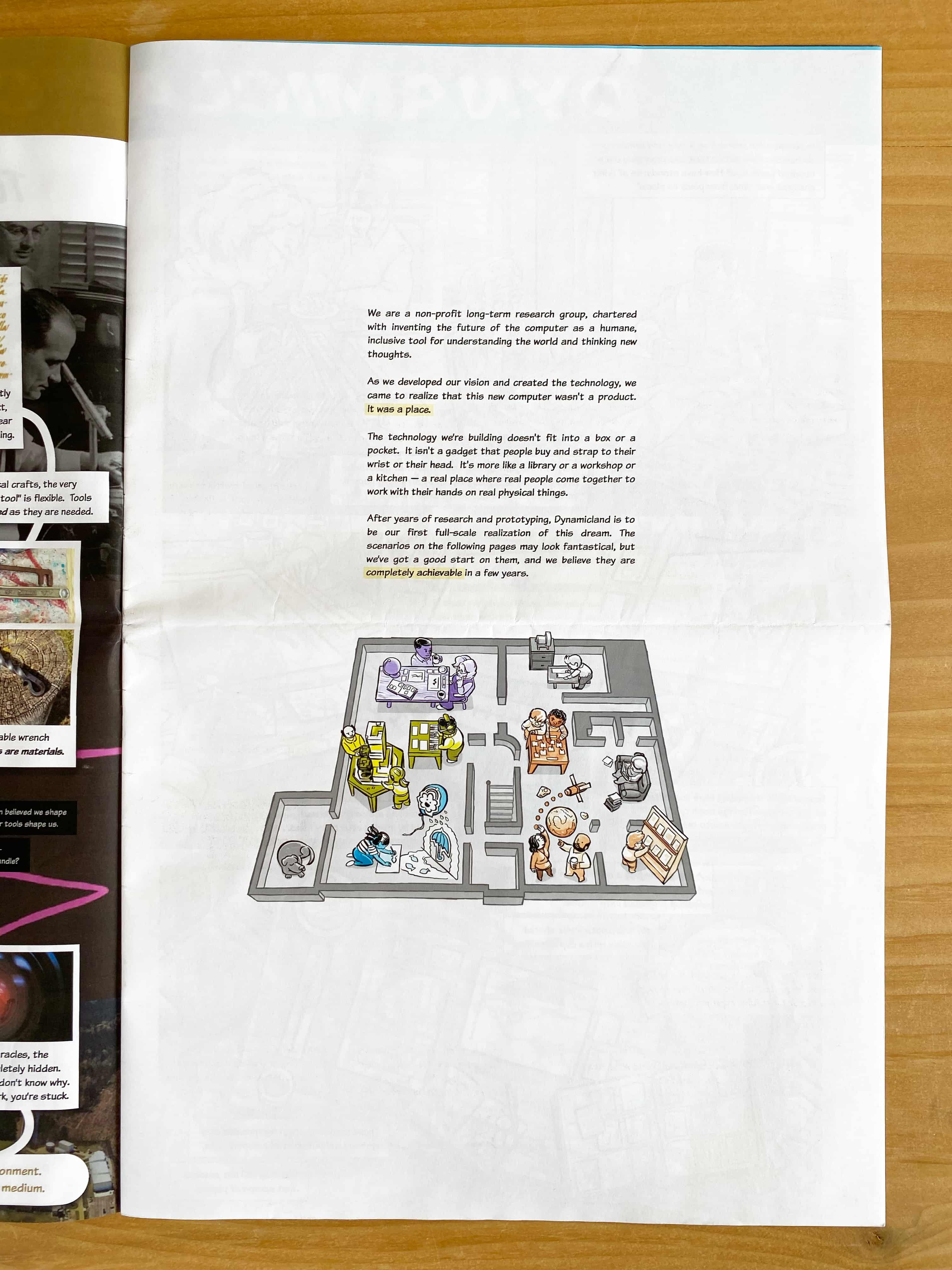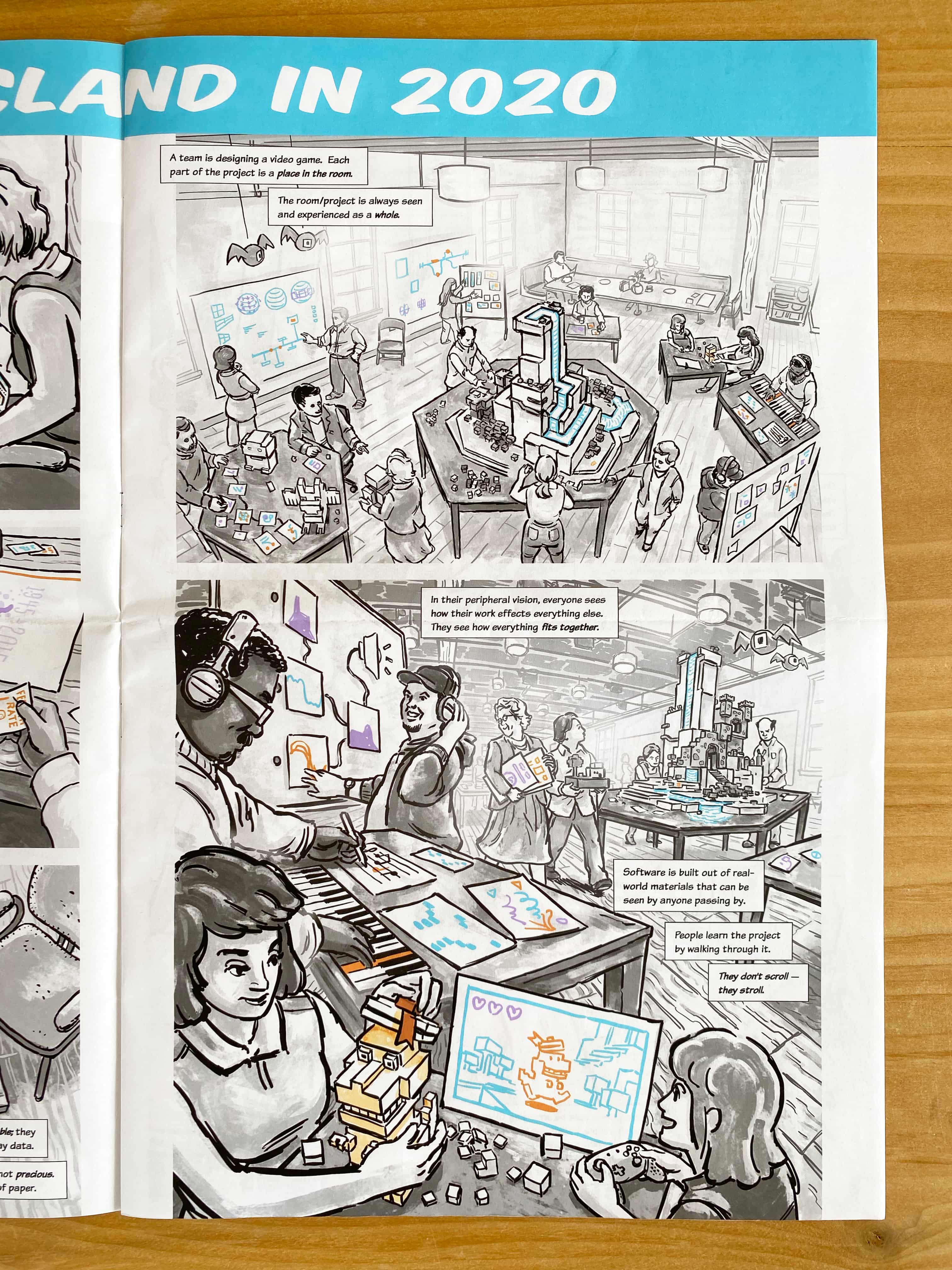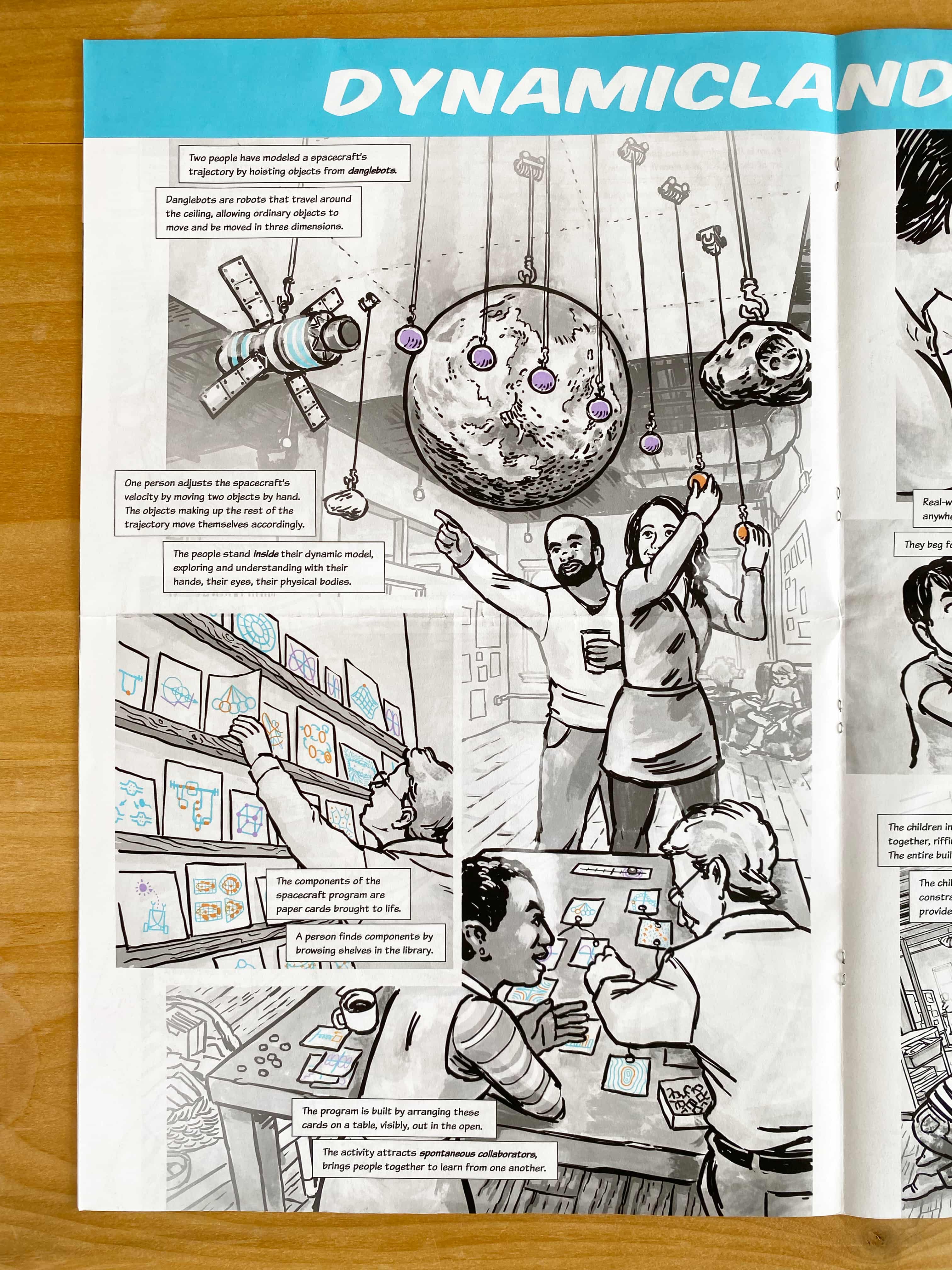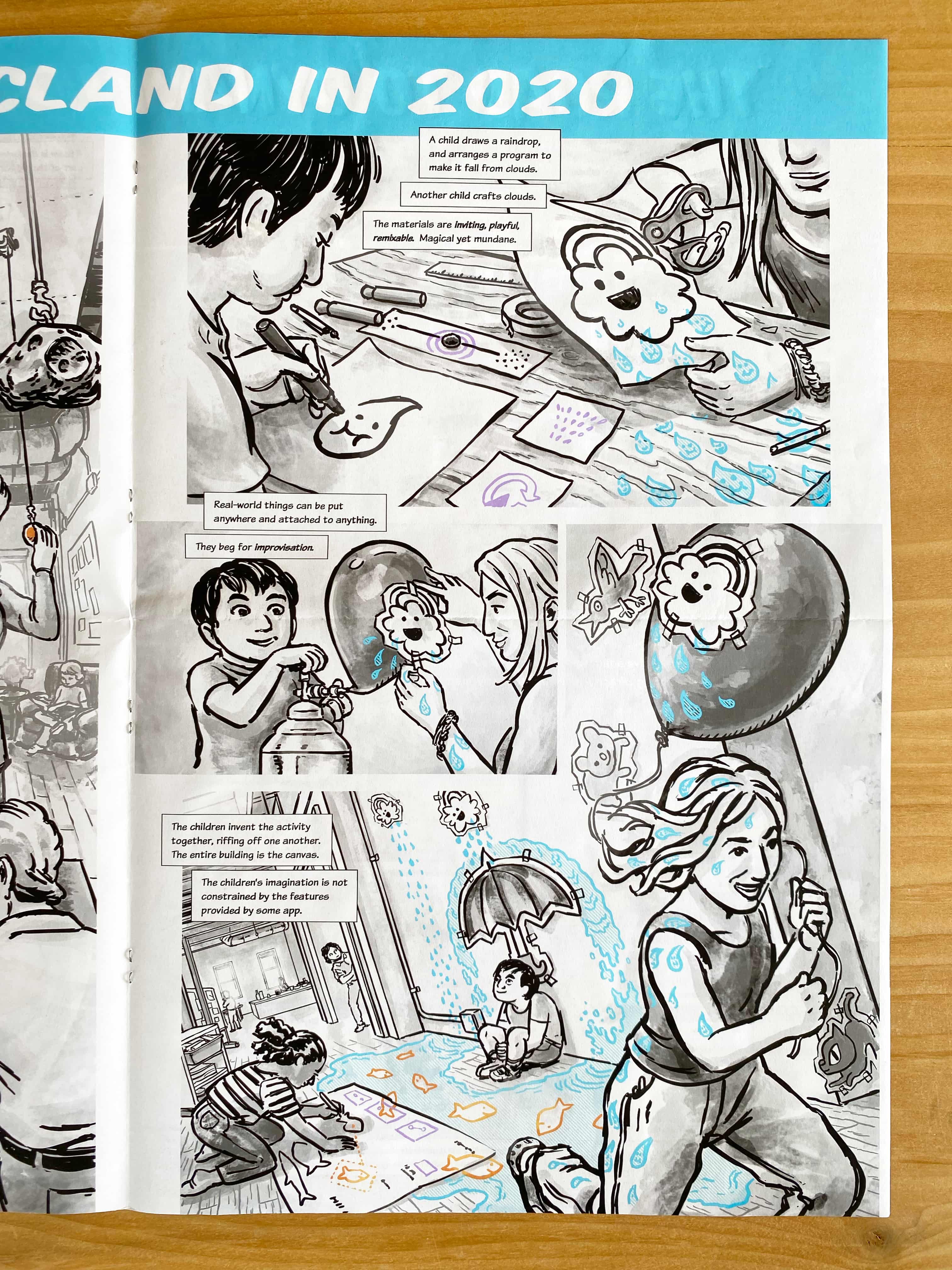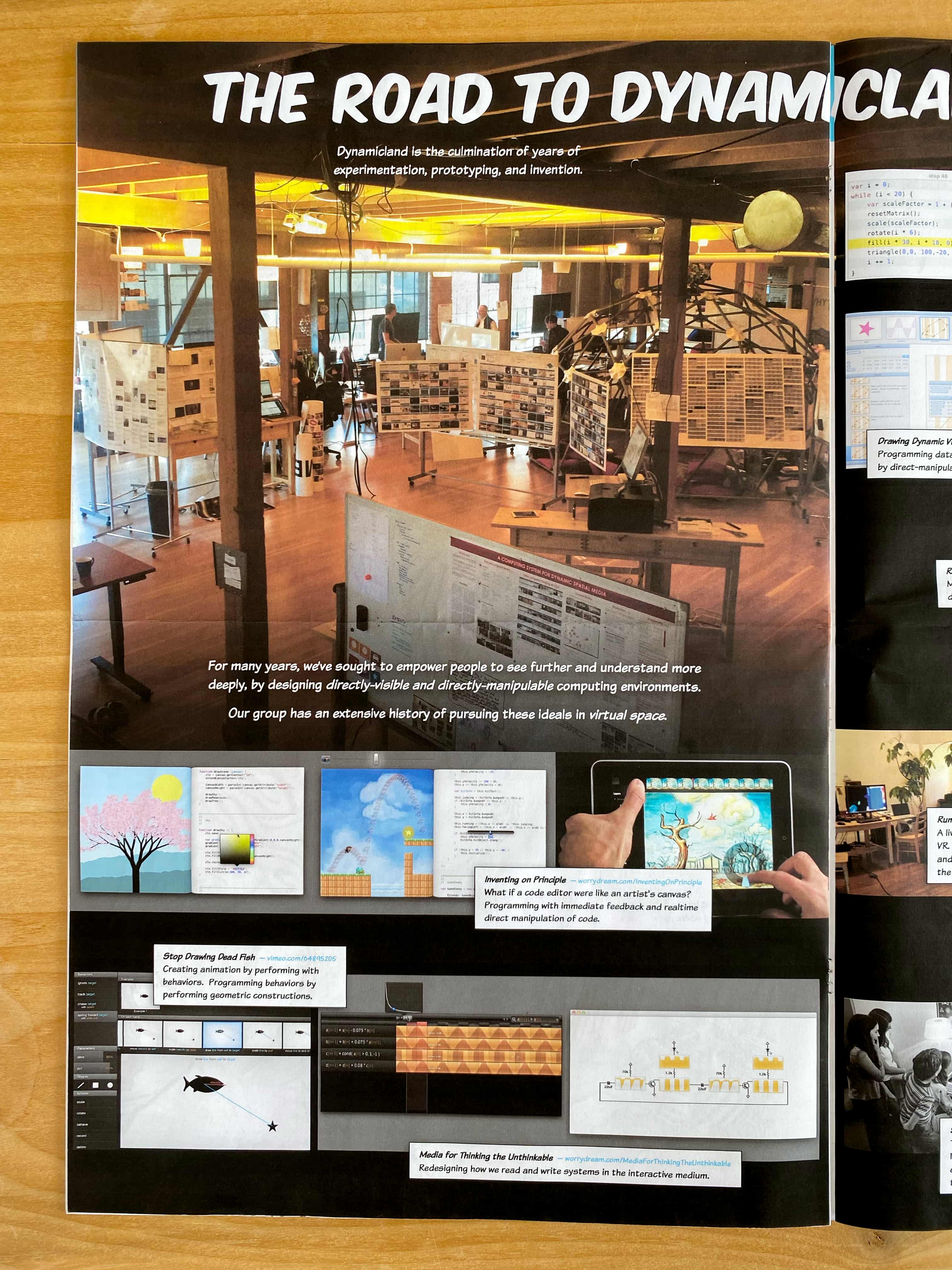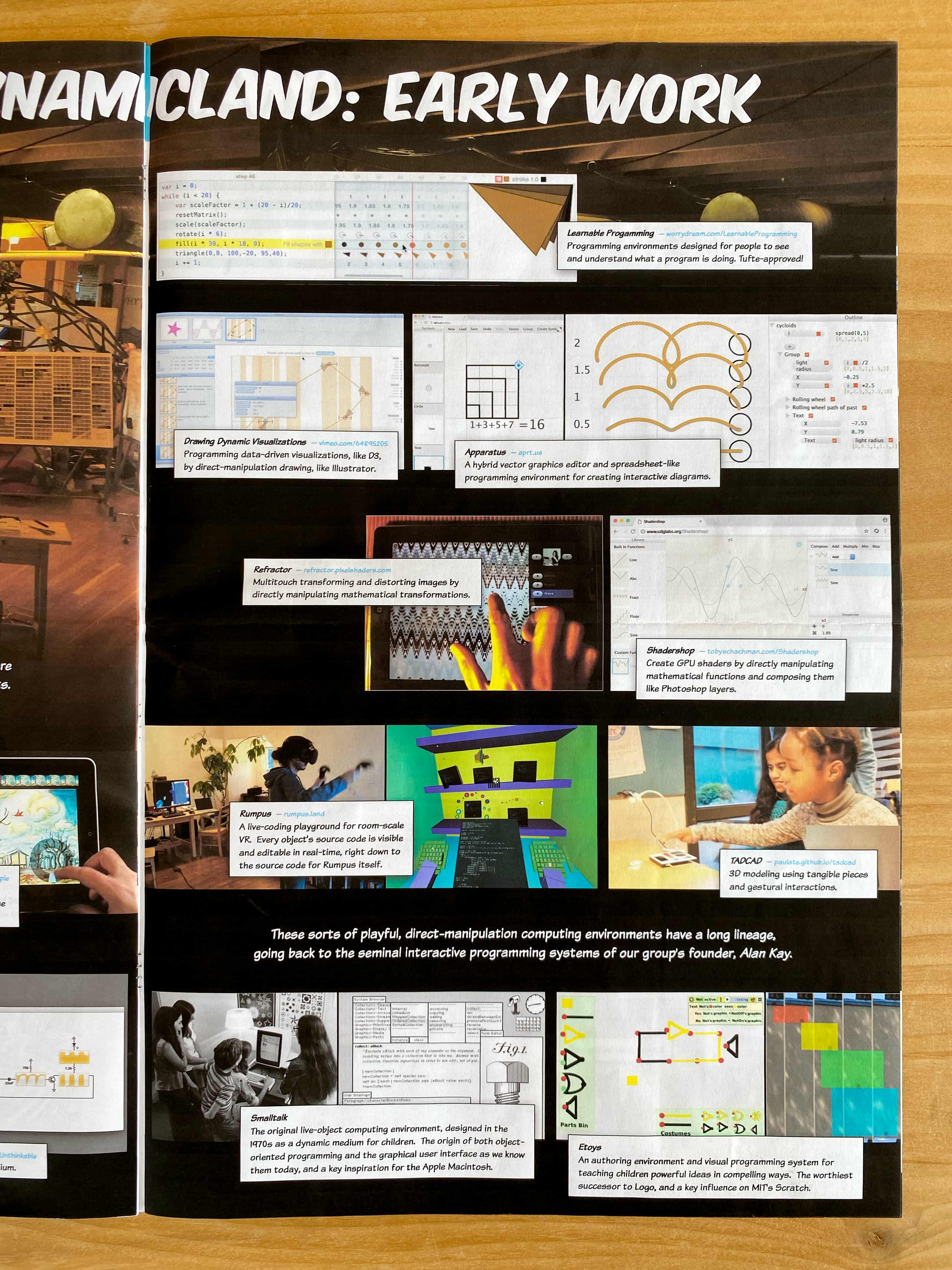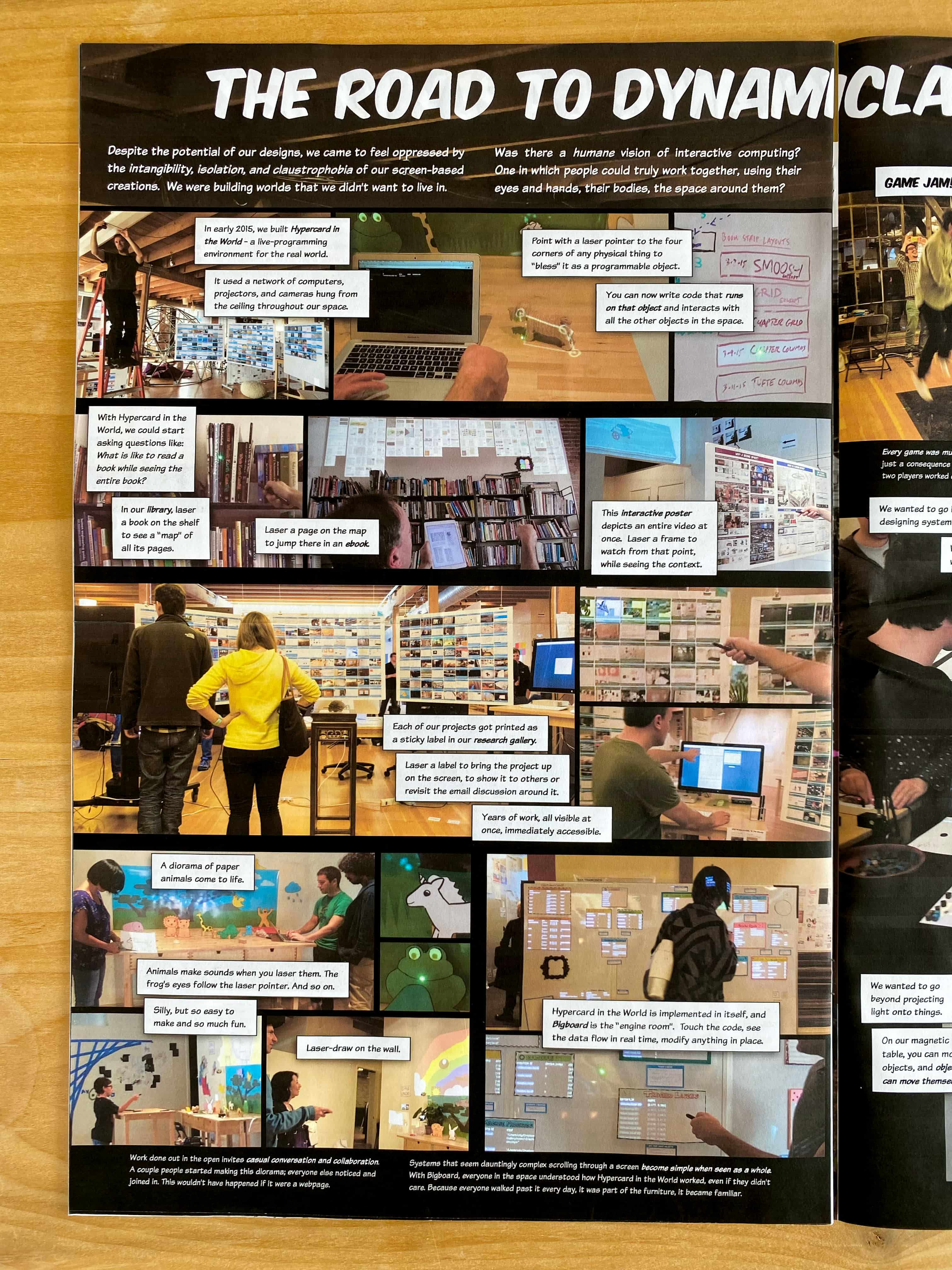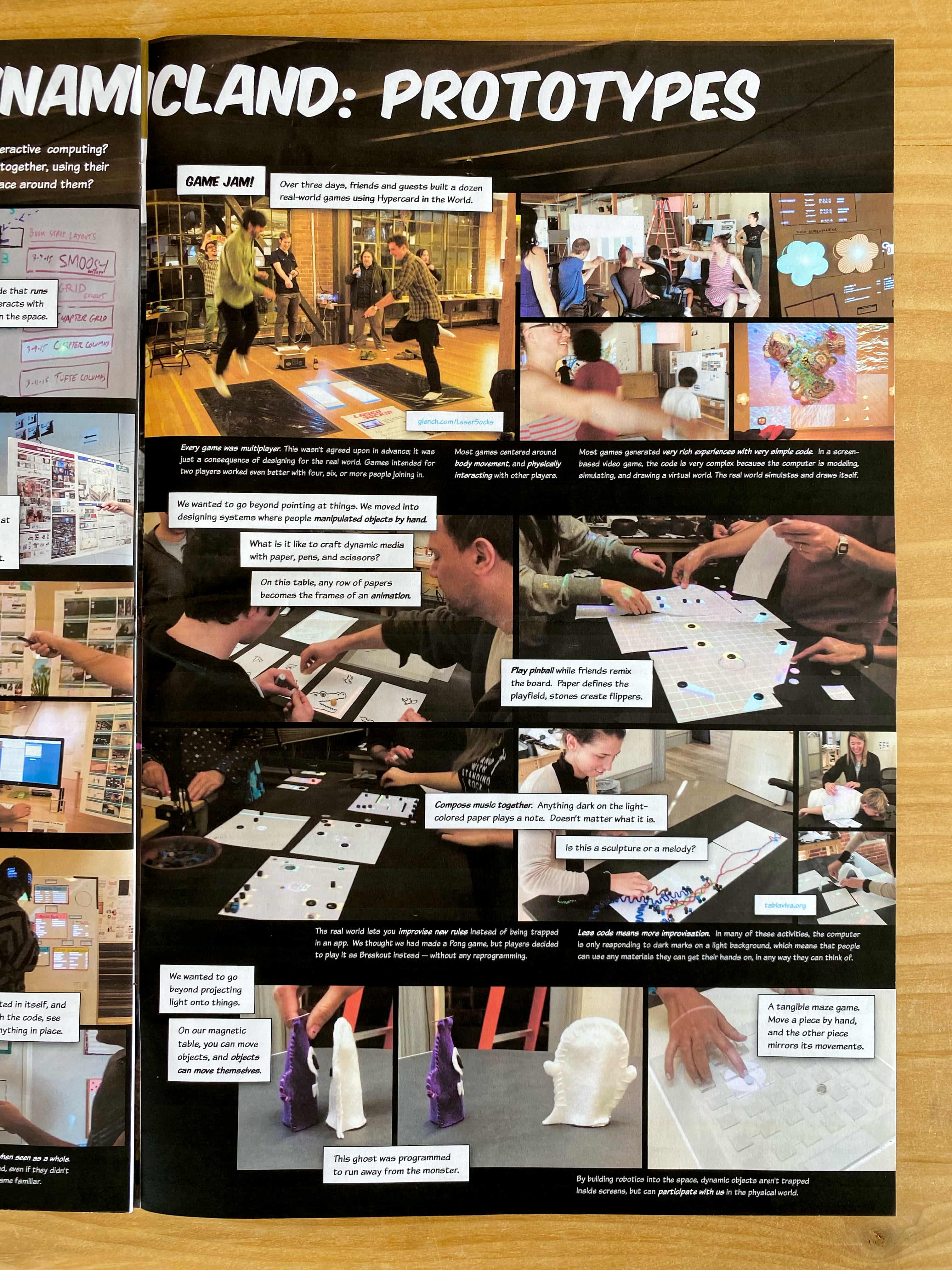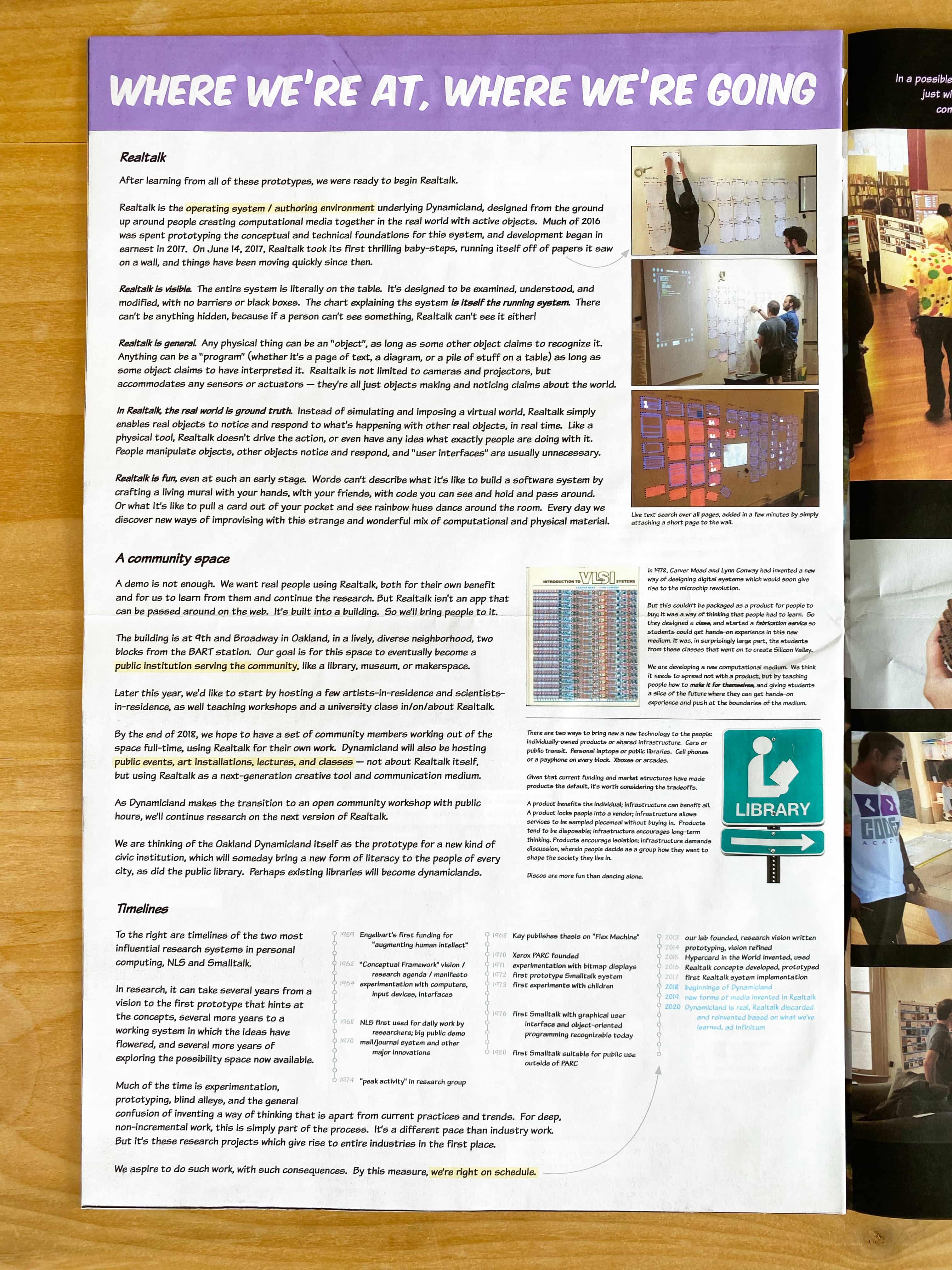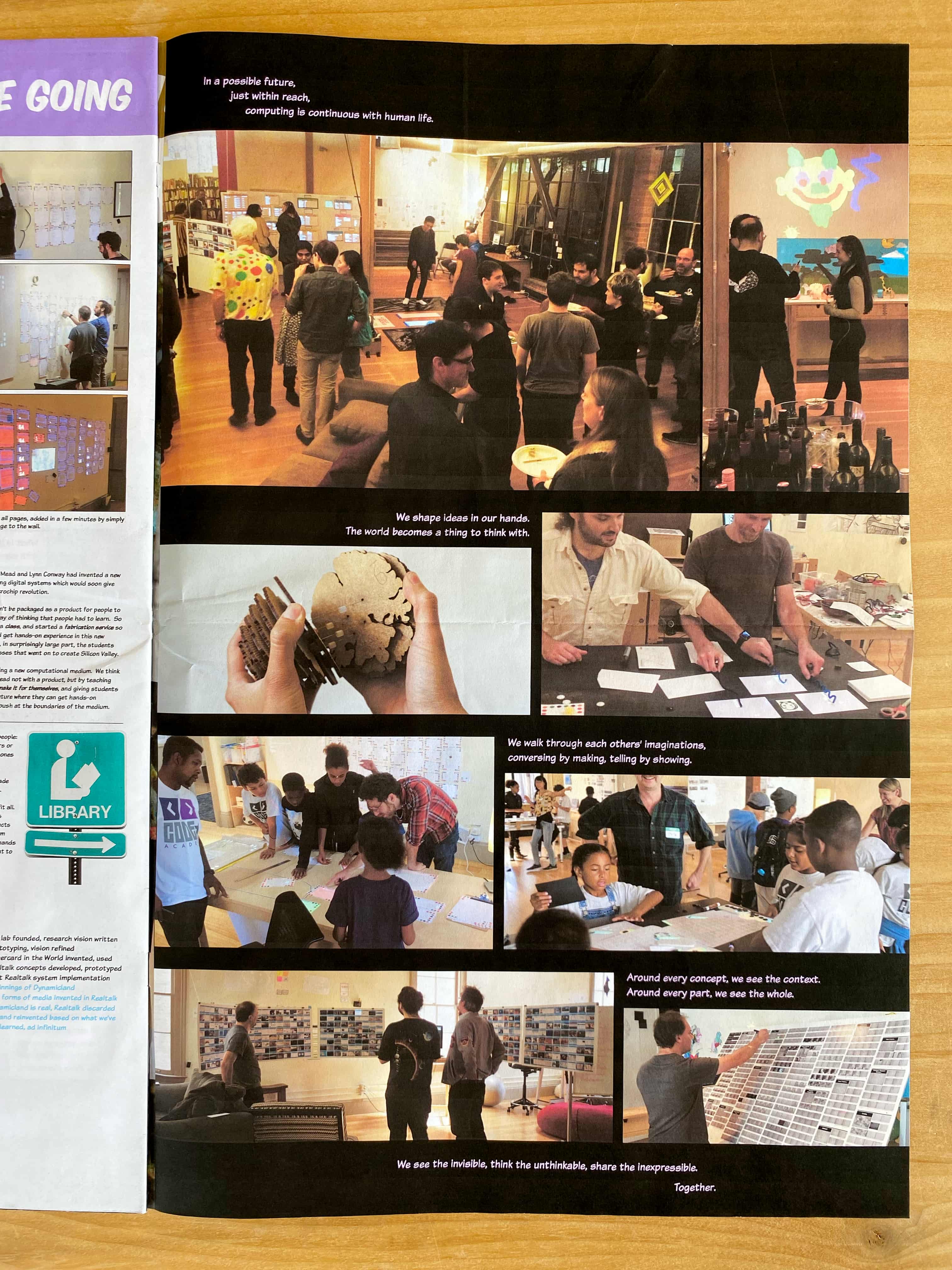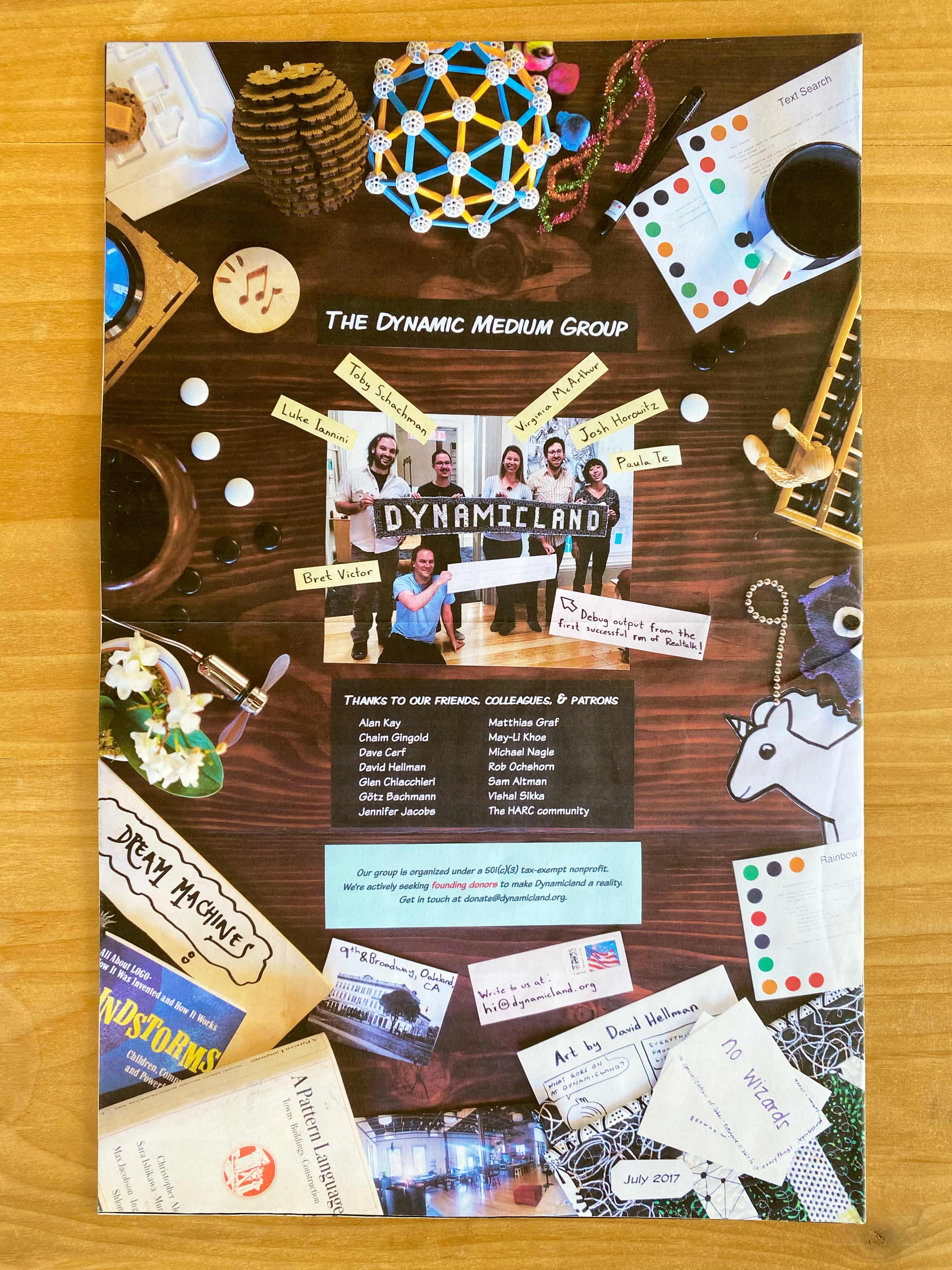WHERE WE’RE AT, WHERE WE’RE GOING
Realtalk
After learning from all of these prototypes, we were ready to begin Realtalk.
Realtalk is the operating system / authoring environment underlying Dynamicland, designed from the ground up around people creating computational media together in the real world with active objects. Much of 2016 was spent prototyping the conceptual and technical foundations for this system, and development began in earnest in 2017. On June 14, 2017, Realtalk took its first thrilling baby-steps, running itself off of papers it saw on a wall, and things have been moving quickly since then.
Realtalk is visible. The entire system is literally on the table. It’s designed to be examined, understood, and modified, with no barriers or black boxes. The chart explaining the system is itself the running system. There can’t be anything hidden, because if a person can’t see something, Realtalk can’t see it either!
Realtalk is general. Any physical thing can be an “object”, as long as some other object claims to recognize it. Anything can be a “program” (whether it’s a page of text, a diagram, or a pile of stuff on a table) as long as some object claims to have interpreted it. Realtalk is not limited to cameras and projectors, but accommodates any sensors or actuators — they’re all just objects making and noticing claims about the world.
In Realtalk, the real world is ground truth. Instead of simulating and imposing a virtual world, Realtalk simply enables real objects to notice and respond to what's happening with other real objects, in real time. Like a physical tool, Realtalk doesn't drive the action, or even have any idea what exactly people are doing with it. People manipulate objects, other objects notice and respond, and “user interfaces” are usually unnecessary.
Realtalk is fun, even at such an early stage. Words can’t describe what it’s like to build a software system by crafting a living mural with your hands, with your friends, with code you can see and hold and pass around. Or what it’s like to pull a card out of your pocket and see rainbow hues dance around the room. Every day we discover new ways of improvising with this strange and wonderful mix of computational and physical material.
Live text search over all pages, added in a few minutes by simply attaching a short page to the wall.
A community space
A demo is not enough. We want real people using Realtalk, both for their own benefit and for us to learn from them and continue the research. But Realtalk isn't an app that can be passed around on the web. It’s built into a building. So we’ll bring people to it.
The building is at 9th and Broadway in Oakland, in a lively, diverse neighborhood, two blocks from the BART station. Our goal is for this space to eventually become a public institution serving the community, like a library, museum, or makerspace.
Later this year, we'd like to start by hosting a few artists-in-residence and scientists-in-residence, as well teaching workshops and a university class in/on/about Realtalk.
By the end of 2018, we hope to have a set of community members working out of the space full-time, using Realtalk for their own work. Dynamicland will also be hosting public events, art installations, lectures, and classes — not about Realtalk itself, but using Realtalk as a next-generation creative tool and communication medium.
As Dynamicland makes the transition to an open community workshop with public hours, we’ll continue research on the next version of Realtalk.
We are thinking of the Oakland Dynamicland itself as the prototype for a new kind of civic institution, which will someday bring a new form of literacy to the people of every city, as did the public library. Perhaps existing libraries will become dynamiclands.
In 1978, Carver Mead and Lynn Conway had invented a new way of designing digital systems which would soon give rise to the microchip revolution.
But this couldn’t be packaged as a product for people to buy; it was a way of thinking that people had to learn. So they designed a class, and started a fabrication service so students could get hands-on experience in this new medium. It was, in surprisingly large part, the students from these classes that went on to create Silicon Valley.
We are developing a new computational medium. We think it needs to spread not with a product, but by teaching people how to make it for themselves, and giving students a slice of the future where they can get hands-on experience and push at the boundaries of the medium.
There are two ways to bring new a new technology to the people: individually-owned products or shared infrastructure. Cars or public transit. Personal laptops or public libraries. Cell phones or a payphone on every block. Xboxes or arcades.
Given that current funding and market structures have made products the default, it's worth considering the tradeoffs.
A product benefits the individual; infrastructure can benefit all. A product locks people into a vendor; infrastructure allows services to be sampled piecemeal without buying in. Products tend to be disposable; infrastructure encourages long-term thinking. Products encourage isolation; infrastructure demands discussion, wherein people decide as a group how they want to shape the society they live in. Discos are more fun than dancing alone.
Timelines
To the right are timelines of the two most influential research systems in personal computing, NLS and Smalltalk.
In research, it can take several years from a vision to the first prototype that hints at the concepts, several more years to a working system in which the ideas have flowered, and several more years of exploring the possibility space now available.
Much of the time is experimentation, prototyping, blind alleys, and the general confusion of inventing a way of thinking that is apart from current practices and trends. For deep, non-incremental work, this is simply part of the process. It’s a different pace than industry work. But it’s these research projects which give rise to entire industries in the first place.
We aspire to do such work, with such consequences. By this measure, we’re right on schedule.
1959: Engelbart's first funding for "augmenting human intellect". 1962: “Conceptual Framework" vision / research agenda / manifesto. 1964: Experimentation with computers, input devices, interfaces. 1968: NLS first used for daily work by researchers; big public demo. 1970: Mail/journal system and other major innovations. 1974: "peak activity" in research group.
1968: Kay publishes thesis on "Flex Machine". 1970: Xerox PARC founded. 1971: Experimentation with bitmap displays. 1972: First prototype Smalltalk system. 1973: First experiments with children. 1976: First Smalltalk with graphical user interface and object-oriented programming recognizable today. 1980: First Smalltalk suitable for public use outside of PARC.
2013: Our lab founded, research vision written. 2014: Prototyping, vision refined. 2015: Hypercard in the World invented, used. 2016: Realtalk concepts developed, prototyped. 2017: First Realtalk system implementation. 2018: Beginnings of Dynamicland. 2019: New forms of media invented in Realtalk. 2020: Dynamicland is real, Realtalk discarded and reinvented based on what we’ve learned, ad infinitum.
